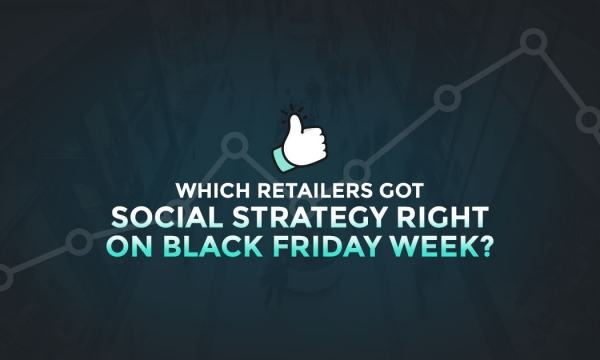
Technological development has aided in the de-humanisation of brands and this is achingly true of those operating within the financial services industry. Whilst technology has allowed for convenient management of personal finances from the comfort of one’s home, the market has suffered with significantly depleted levels of business to consumer interaction.
It is unfortunate for brands within the financial services industry that social networking and online sharing really gained momentum at a time when consumer confidence, experience and opinion of the personal finance sector was particularly low. Whilst recent reports project growth over the next five years (Bank of England; Trends In Lending, 2014), the financial services industry continues to be rife with negativity; from the closure of bricks and mortar banks and concerns over lending, through to the constant scrutiny and ill-feeling towards investment banking and payday lenders (by July 2014, payday loans brands will be faced with new regulations which, should they fail to adhere to, will see them removed from the market both on and off line). It is clear that the industry is struggling to surface in one piece from legacy issues dating back to the recession.
Being Social
Whilst other industries have embraced social media with open arms, the financial services sector has been somewhat tentative and sceptical of its ability to simultaneously conform to legislation and be active in a public space. This reservation has contributed to a market-wide failure to leverage powerful modern day customer relationship management assets. Social as a channel has grown exponentially in recent years and with no indication of market saturation or downfall in demand, this trend is expected to continue.
The financial services industry as a whole fails to engender consumer loyalty. Brand advocacy is something that is extremely rare, if not entirely removed, from within its consumer base and this is not surprising in a market where brands are somewhat anonymous and only distinguishable by price and product benefits. With no identifiable affiliations or attributes, how can consumers be expected to connect with a brand in any market? Whether steeped in regulation or history, financial services operators are typically void of personality and are therefore inaccessible to their consumers.
It must be noted that a selection of financial services brands are active on popular social media platforms but it is apparent that their primary reason for this activity is to pick up complaints, and then apologise. These brands are doing it wrong.
With the volume of press coverage and online discussion across information portals, forums and social media platforms, brands have the opportunity to acquire insight into real customer opinion and initiate a change in the market. Social data is more than just a monotonous count of likes, retweets or followers, and platforms are so much more than a complaints desk. Social media and its associated data is the secret to strategizing consumer relationship management and engendering a positive brand presence online.
Asset Benefits
We live in a digital age where everything that can be automated is, resulting in ever-declining levels of human interaction between consumers and brands. It is a mistake to assume that this is what customers want – because they don’t. Consumers in any market still place a high value on human contact as part of a positive brand experience. Social platforms offer a human touch point for these consumers and an avenue for them to acquire personal and convenient support. For financial services brands, social platforms offer a lot more.
By aligning marketing strategies and business objectives with a clearly defined social media strategy, brands are able to change customer perception. They can develop a personality and create affiliation with consumers and brands alike.
Social media platforms offer brands the opportunity to listen for questions that they’re able to answer or solutions they’re able to provide. By listening to discussion around their competitors, brands can identify problems with product offering and the disposition of their consumer base. This information can be used to tailor content and marketing strategies on and off line and even to make changes to product offerings to serve consumer needs. If a competitor is doing it wrong, do it right and shout about it! In short, social media platforms empower brands to be proactive in the acquisition and maintenance of a happy and loyal customer base.
From a practical perspective, social media platforms also allow brands to reach out to a large number of people, very quickly. This can be priceless should the need arise to avert a crisis or respond to negative press coverage.
So, how do you gather, extrapolate and interpret social data in order to benefit from all of the above? As discussed by Joel Windels at DataIQ (May 15th, London), pioneers and practitioners within the data field are calling for an attitudinal shift in the use of social media assets and reporting frameworks to allow brands to do exactly that.
Social media in essence is self-serving and in nature is self-reflective. Brands across the board have historically embraced this without question and it is evidenced in their reporting frameworks – this needs to change.
The new breed of social analysis is customer centric. It realises that the myriad of information that can be acquired from monitoring and analysing broader social activity (typically referred to as ‘noise’) is of utmost value because this data is actually representative of consumers; it can describe trends, interests and attitudes. It is invaluable compared to the one tweet which mentions one brand, once.
Playing Catch-up
Whilst the financial services industry has been slow to adopt social media, it is more important than ever to leverage this as a customer relations management tool. The time for brands to do this is now. As more and more platforms are launched to cater for emerging customer segments, financial services brands are at danger of forever playing catch-up in the market.
Social media platforms present a window of opportunity for financial services brands to become personable, likeable and accessible. But merely having a presence is not enough, and reporting frameworks must allow for more than the arbitrary visualisation of likes and followers.
Deployment of a robust and business orientated social strategy can support sales growth, help to change consumer perception and, by analysing ‘surplus’ data, brands can find out more about their consumer base and their competitors. Investment in the right tools and resource to gather, extrapolate and interpret social data will set brands apart in this volatile market.
At Marketing's financial services social media conference on Tuesday 17th June, we'll be presenting our latest case study and approach on how financial services brands can develop an effective social media strategy using 6 key principles.
Request your copy of our 'Online Consumer Finance' market intelligence report, which will be available in June 2014.



